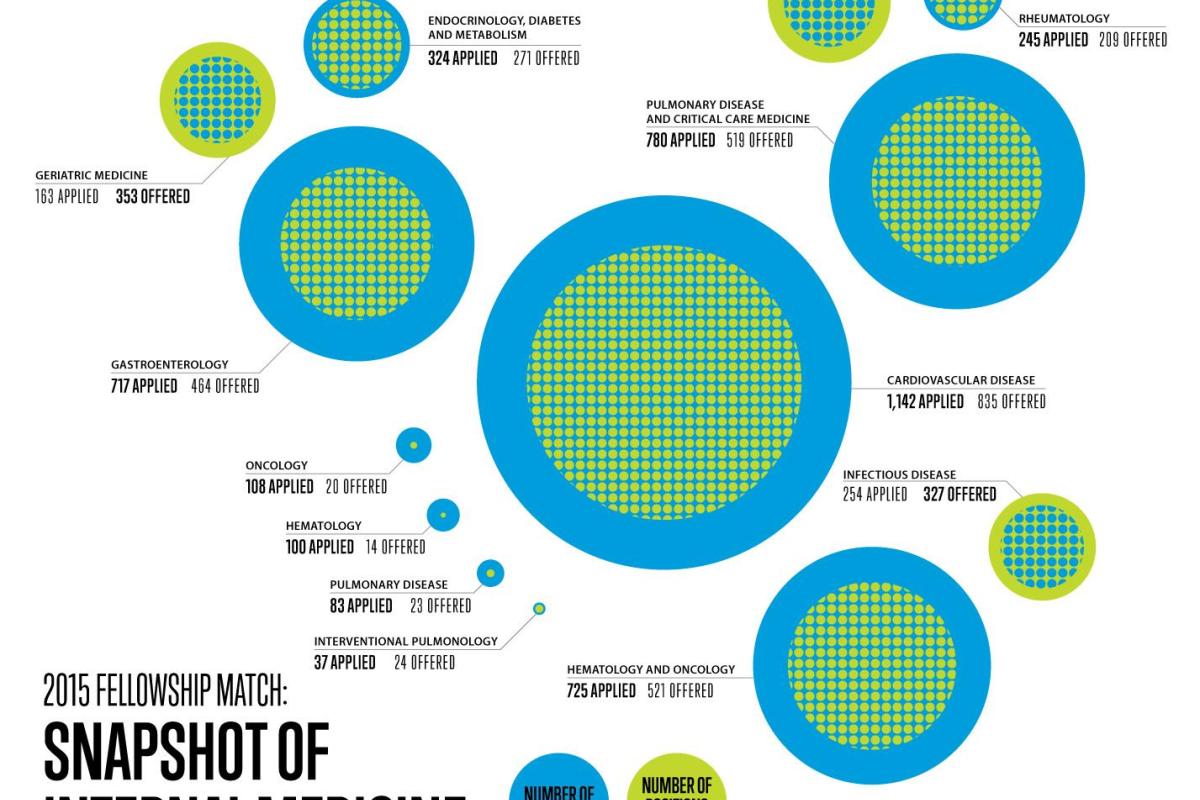Which specialties attract the most fellowship applicants? Competition for fellowships varies by specialty, so if you plan to pursue subspecialty training, take time to note key trends that may impact your field. Here are a few that stood out among last year’s fellowship applicants.
A record-breaking year for fellowship applicants
The 2015 appointment year marked the largest in the history of the National Resident Matching Program (NRMP) Specialties Matching Service®, featuring 3,674 programs within 56 subspecialties.
Combined, these programs offered 8,503 fellowship positions, and 9,538 applicants participated in at least one of the fellowship Matches. The results show that competition for a fellowship remains high as nearly one-quarter of the residents who applied for fellowships didn’t receive a position.
Subspecialties with the most fellowship applicants
Chances for landing a fellowship varies by specialty, but based on applicant volume alone, certain subspecialties proved to be heavy hitters for fellowship applicants in 2015. Internal medicine, the largest specialty in terms of practitioners, not surprisingly received the highest number of fellowship applications, with cardiovascular disease, and pulmonary disease and critical care medicine being the top two subspecialties for applicants (1,142 and 780, respectively).
At a glance, here’s a breakdown of other subspecialties with the most applicants based strictly on application numbers:
- Pain medicine (397 applied for 286 positions)
- Sports medicine (325 applied for 236 positions)
- Child and adolescent psychiatry (320 applied for 338 positions)
- Neonatal-perinatal medicine (295 applied for 242 positions)
- Interventional radiology (270 applied for 234 positions)
- Surgical critical care (187 applied for 212 positions)
- Allergy and immunology (155 applied for 126 positions)
- Maternal-fetal medicine (144 applied for 97 positions)
- Sleep medicine (102 applied for 130 positions)
Where there’s the most competition
In many fields, the number of residents applying for a fellowship outpaced the number of positions available. Some of the subspecialties that were most competitive based on the ratio of the number of applicants to positions include:
- Hematology (the ratio of applicants to positions was more than 7:1)
- Oncology (more than 5:1)
- Pulmonary disease (nearly 4:1)
- Pediatric sports medicine (more than 3:1)
- Gynecologic oncology (nearly 2:1)
- Minimally invasive gynecological surgery (nearly 2:1)
- Pediatric surgery (nearly 2:1)
On the flip side, more than 20 subspecialties actually had more positions than applicants. For instance, pediatric pulmonology received 33 applications and offered 61 positions.




